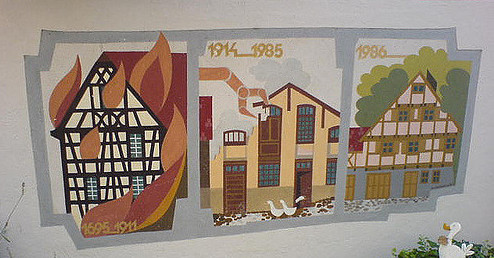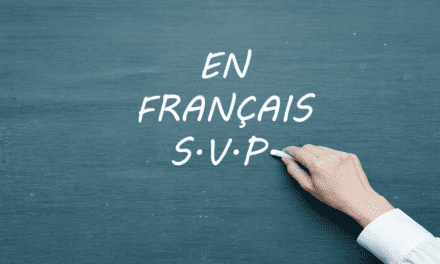Dan Hedges is a Social Science consultant at the Sir Wilfrid Laurier School Board.

CC BY 2.0 photo credit: Fox Wu 2006
I’m outing myself as a nerd here, but I’m sincerely excited to describe a student centered learning tool that has lately culminated into a perfect storm with many of the Social Science teachers that I work with around Quebec: the Intellectual Operations Master Kit.
Intellectual Operations in the curriculum
First, some context. The Intellectual Operations in social science are a series of skills that allow students to think like a social scientist. According to the new History program: “The evaluation of learning focuses on the acquisition of knowledge, the performance of intellectual operations (that is, know-how related to the key features of the competencies), and the application of the competencies”. As you can see, knowledge alone is not enough. Students need to know how to contextualize, how to compare and how to synthesize knowledge – this is where the intellectual operations come in.
The Intellectual Operations Master Kit
The Intellectual Operations Master Kit is a complex graphic organizer with moveable parts. The kit, and all of the shapes included in it, is a physical kit designed to be printed out and laminated. Students, working in small groups, can use the kit to physically ‘map out’ a historical event in order to:
- work out its causes and consequences
- establish facts for the historical event in question
- identify elements of continuity and change
- solidify concepts
- timeline important turning points.
The kit allows students to use intellectual operations to develop their historical thinking. The whole kit is colour-coded according to five aspects: political, territorial, scientific, social and cultural. A legend is used to see which colours represent which aspect. For example, a blue square represents a ‘territorial fact’ and a yellow circle represents a ‘political cause’.
Piloting the Kit
As I stated earlier, I’m in the middle of a perfect storm with the Intellectual Operations Master Kit. That perfect storm is occurring because of praxis, which is the bridge that connects theory with practise. The momentum that I feel moving ahead with the Kit comes from avoiding isolation. It comes from co-planning, co-teaching, and co-reflecting, and, ultimately, with feeding forward the various insights from teachers and students, each time the tool is implemented. Basically, the theoretical and research-based ideas behind the tool have to be ‘sobered up’ by actual classroom teaching. In other words, the theoretical underpinnings of the tool are only as good as the practical applications of the tool in real classrooms.
In terms of sticky learning and so called deep-learning, I am becoming very aware that the best learning in my life – and where the most lucid brain structures have been constructed – has been rooted in experiential learning. For example, living in Spain for three months as a Grade 11 student has forged permanent brain structures for me that are accessible to this day. Because they were multi-modal, my experiences in Spain back in the mid-90’s (I still have mix tapes from then…) are encoded so deeply that I literally cannot forget those places and times, even if I tried.
As we can not always afford to bring our class to the Grand Canyon, or straight to the Louvre, we look for the next best thing in terms of making classroom experiences multi-modal, or multi-sensory, so that the conditions for sticky learning are present. The research informs us that multi-modal encoding (and this is based on peer reviewed research…) leads to better brain recall later on (which means that ‘sticky’ or ‘deep learning’ has taken place).
A quick experiment: bring to the surface one deep learning memory that you have from high school. Ask yourself if the encoding at the time of that memory was multi-sensory/multi-modal. You can see the point of this mental exercise, as it relates to this discussion of deep learning!
The hands on graphic organizers that are part of the Social Science Graphic Organizer Kit contain both visual as well as tactile components. While this learning brought about by hands-on graphic organizers may not be as impactful as living in coastal Spain for three months, I am convinced that my recent successes with the graphic organizers has a lot to do with keeping ‘sticky learning’ at the forefront of my own pedagogical reflection.
The Document Collections
In order to make effective use of the kit, students need access to a document collection (these historical documents would encompass the types of historical documents that are utilized in typical MEES Document Based Questions). The document collection can be physical (such as a Jackdaw style, which is essentially a themed envelope that contains say 10-15 carefully selected historical documents) or it can be virtual (such as a collection of historical documents curated in a google folder or on a platform such as Padlet).
If a teacher decides to go with the physical historical document collection, here is one such way forward:
For the Jackdaw style, each brown envelope is themed by topic, and the topics could be selected from the Precisions of Learning in the QEP. Each brown envelope can contain anywhere from 10-20 historical documents, including historical texts, images, photographs, depictions of artifacts, maps, timelines, etc. When a small group of students opens the envelope, they discover historical documents, and then the student work of feeling like and acting like a historian can begin, where the students are now detectives of the past.
The Graphic Organizer Kit
Let’s address the graphic organizers and how they help students think like historians.
The graphic organizers included in the kit contain movable parts, which means that students are physically mapping out various colour-coded shapes; they are essentially co-constructing a historical ‘puzzle’, according the shapes (square are facts, circles are causes, and rectangules are consequences).
Here is a snapshot the Cause and Consequence Kit, which was designed primarly with High School student in mind (and which has been field tested now several times). One needs to picture that all of the shapes are cut out individually (like puzzle pieces…)

The students, in small groups, are now ready to extract historical information from the document collection and then place that historical information onto the shapes of the graphic organizers kit.
Here is one possible order which the students could work:
- Students (in small groups of 2 or 3) would start by placing the centerpiece (the historical event placement) in the center of their work space. They will next need to understand that the SQAURES that represent FACTS are to be placed ONTO the HISTORICAL EVENT.Students will also need to understand that the circles (causes) will later get placed to the left of the historical event (since the cause precede the event) and that the rectangles (consequences) will get placed to the right of the Historical Event.
- Students will understand that everything in the KIT is color coded to represent the five aspects (economic, political, social, cultural, and territorial) The colour coded system of the kit is why the kit also contains a LEGEND.
- Students will open their document collections to begin to discover and explore the historical documents in the collection.
- The process of ‘establishing facts’ will happen procedurally before establishing causes and consequences.
- After the students have ‘established facts’ for the five aspects, using the SQUARES, they can then move onto establishing causes, and then onto establishing consequences. The whole time, they will keep in mind the color system. So, for example, they will understand that a green circle is an economic cause.
- Depending on the historical event in question, the process of mapping out the event using the document collection as well as the graphic organizer kit can take one or several class periods, depending on the length of the classes. In my experience, with implementing the kit at the secondary level, two full classes can easily be dedicated to students use of the Cause and Consequence kit when tackling a broad historical event.
Reflection
The tactile and visual nature of the task (making it multi-modal, and which leads to so called ‘sticky learning’ and better encoding), the student centered nature (students become the historical detectives!), and the open-ended/inquiry-led process leads overall to a deep learning experience.
Implemented and practiced as a routine throughout the year, students become more and more confident with how the Intellectual Operations work, and are able to ‘tackle’ document collections with historical rigor, which is implied with each of the Intellectual Operations. The kit is also a great formative tool for teachers to check where students are at in terms of constructing their cognitive schemas at any given juncture.
Working with the kit, students get to experience what it is like to DO HISTORY, not just memorize historical facts. The Intellectual Operations Kits are one way of making the Intellectual Operations concrete and experiential.
If you have any logistical questions on how the kit could be implemented, please feel free to post a comment, or question.
The kit can be accessed through the LEARN website here.
Further reading
Engelkamp, J. (1998). Memory for actions. Hove, England: Psychology Press.




Truly inspiring to be used